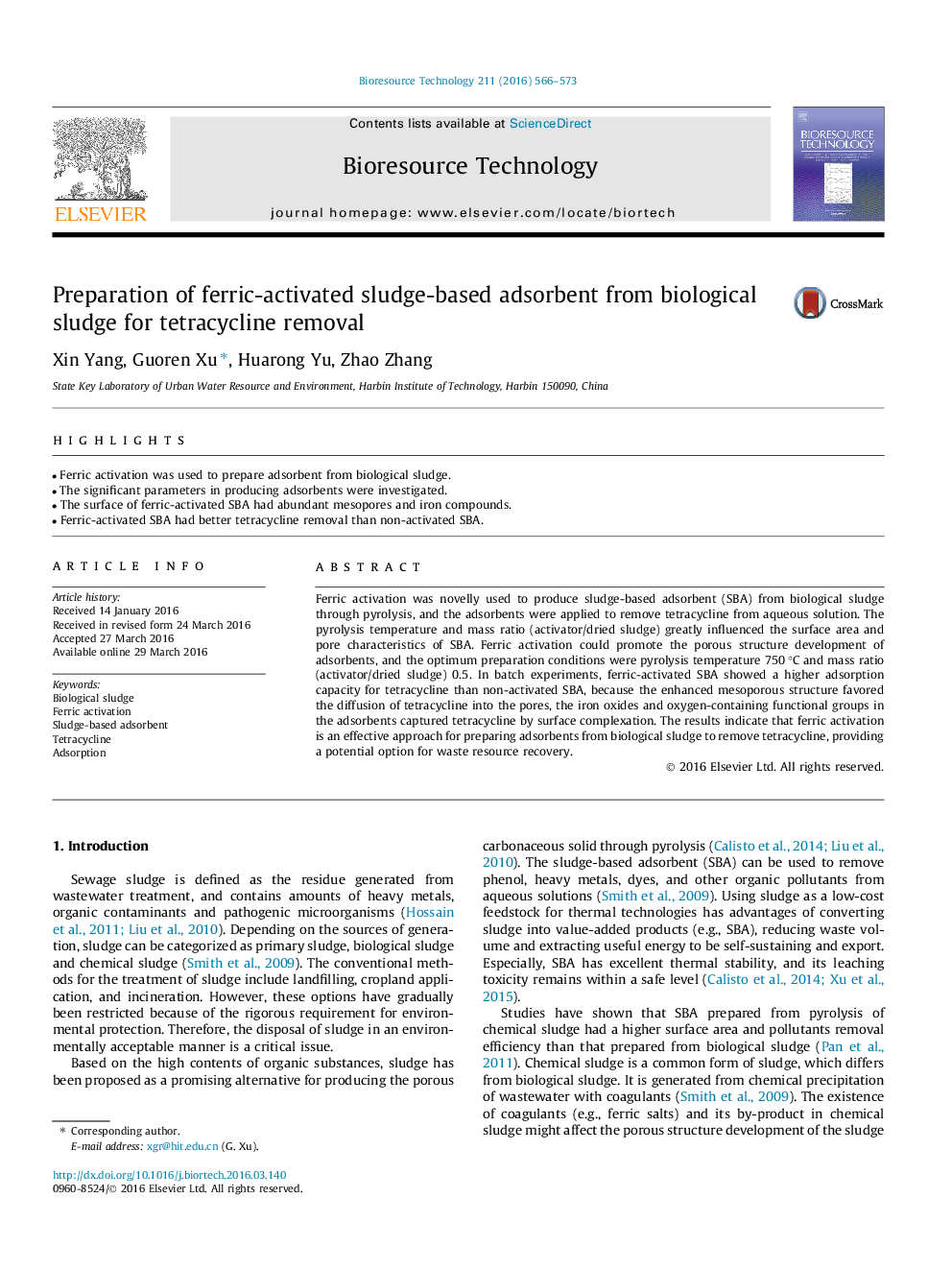| Article ID | Journal | Published Year | Pages | File Type |
|---|---|---|---|---|
| 7071621 | Bioresource Technology | 2016 | 8 Pages |
Abstract
Ferric activation was novelly used to produce sludge-based adsorbent (SBA) from biological sludge through pyrolysis, and the adsorbents were applied to remove tetracycline from aqueous solution. The pyrolysis temperature and mass ratio (activator/dried sludge) greatly influenced the surface area and pore characteristics of SBA. Ferric activation could promote the porous structure development of adsorbents, and the optimum preparation conditions were pyrolysis temperature 750 °C and mass ratio (activator/dried sludge) 0.5. In batch experiments, ferric-activated SBA showed a higher adsorption capacity for tetracycline than non-activated SBA, because the enhanced mesoporous structure favored the diffusion of tetracycline into the pores, the iron oxides and oxygen-containing functional groups in the adsorbents captured tetracycline by surface complexation. The results indicate that ferric activation is an effective approach for preparing adsorbents from biological sludge to remove tetracycline, providing a potential option for waste resource recovery.
Related Topics
Physical Sciences and Engineering
Chemical Engineering
Process Chemistry and Technology
Authors
Xin Yang, Guoren Xu, Huarong Yu, Zhao Zhang,
